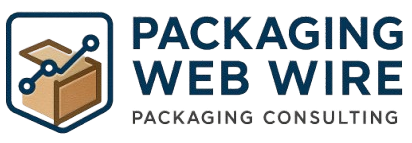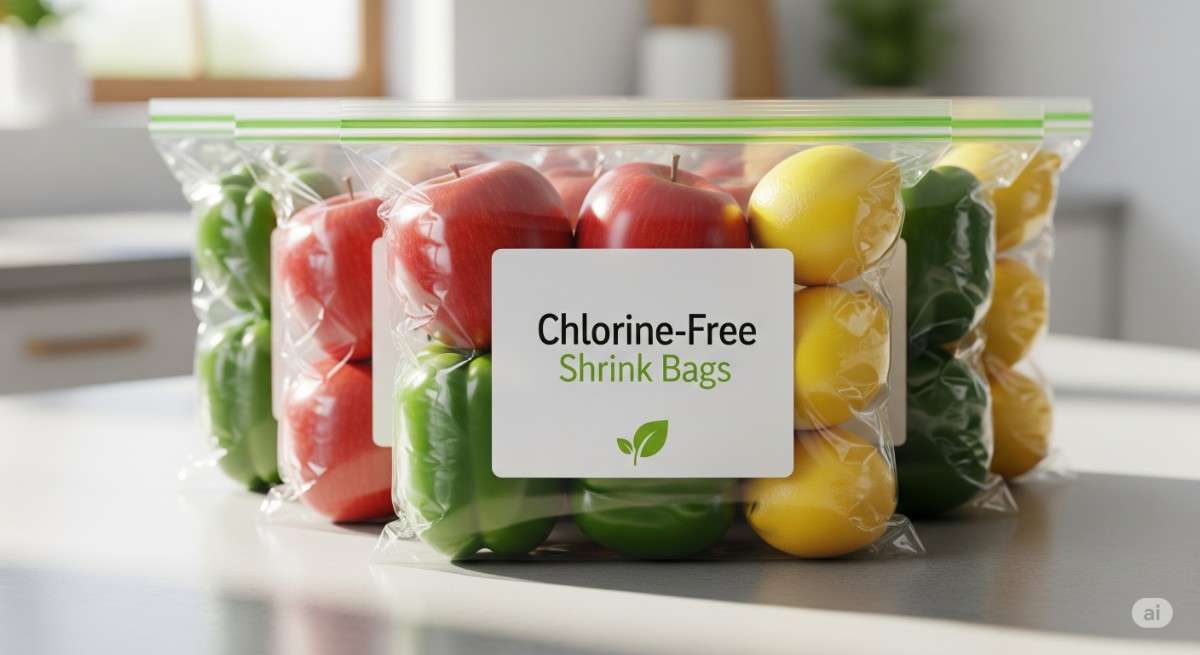The chlorine-free shrink bags market is set for strong growth between 2025 and 2034, with revenues projected to reach hundreds of millions. These eco-friendly packaging materials avoid chlorine-based compounds, offering a safer alternative to conventional PVC shrink films. Typically made from polyolefin, they deliver excellent transparency, durability, and shrink performance while reducing harmful emissions during production and disposal.
A key advantage is that 25% more bags fit into a box, lowering the need for corrugated materials, cutting shipping costs, and saving warehouse space. They also feature a wider sealing window, ensuring reliable, cleaner sealing at lower temperatures. Industries such as food packaging, pharmaceuticals, and consumer goods are increasingly adopting these solutions in response to regulatory demands and consumer preference for sustainable packaging.
Key Market Trends
1. Rising Environmental Awareness
The growing understanding of the environmental damage caused by traditional plastic packaging has triggered a global push for greener alternatives. Single-use plastics contribute heavily to landfill waste and marine pollution, prompting regulatory changes and brand commitments toward sustainability.
2. Strong Growth in Emerging Markets
Emerging economies in Asia-Pacific, Latin America, and the Middle East are witnessing a surge in demand for eco-friendly packaging. Rising consumer eco-consciousness, combined with proactive government policies, creates a fertile environment for chlorine-free shrink bag adoption.
Top Chlorine-Free Shrink Bags Companies
1. Amcor plc
-
About: Amcor is a global leader in packaging solutions, focusing on innovation and sustainability.
-
Products: Produces flexible and rigid packaging, including eco-friendly shrink films for food, beverage, and healthcare sectors.
-
Market Cap: Approximately USD 16 billion.
2. Sealed Air Corporation
-
About: Sealed Air specializes in packaging materials and systems, known for their protective packaging innovations.
-
Products: Offers Cryovac® shrink packaging solutions tailored for food safety and freshness.
-
Market Cap: Around USD 8 billion.
3. Krehalon B.V.
-
About: A specialist in barrier shrink packaging films for fresh food markets.
-
Products: Advanced chlorine-free shrink bags for meat, poultry, and dairy products.
-
Market Cap: Privately held.
Invest in Our Premium Strategic Solution: https://www.towardspackaging.com/price/5467
4. Kureha Corporation
-
About: A Japan-based chemical manufacturer with a strong focus on high-performance materials.
-
Products: Polyolefin-based shrink films with superior sealing and clarity for industrial and food applications.
-
Market Cap: Roughly USD 2.5 billion.
5. Winpak Ltd.
-
About: Canadian packaging manufacturer serving food, beverage, and healthcare industries.
-
Products: High-barrier shrink bags designed for extended shelf life and product safety.
-
Market Cap: Around USD 2.3 billion.
6. Industrial Polythene Ltd.
-
About: UK-based manufacturer of plastic packaging solutions.
-
Products: Offers custom polyolefin shrink bags for retail and industrial sectors.
-
Market Cap: Privately held.
7. Flavorseal
-
About: A U.S.-based packaging solutions provider focusing on the food industry.
-
Products: Vacuum shrink bags, netting, and cooking bags that are chlorine-free and sustainable.
-
Market Cap: Privately held.
8. Euralpack Belgium n.v.
-
About: European producer of flexible food packaging materials.
-
Products: Polyolefin shrink films for meat, cheese, and bakery products.
-
Market Cap: Privately held.
9. Tripak Packaging Solutions
-
About: Australian-based packaging company specializing in shrink wrapping solutions.
-
Products: Chlorine-free shrink bags for fresh produce, meat, and retail applications.
-
Market Cap: Privately held.
Strategic Recommendations
-
Invest in R&D: Focus on enhancing the durability and performance of chlorine-free shrink bags to compete with PVC films.
-
Expand in Emerging Markets: Tap into high-growth regions with tailored marketing campaigns highlighting sustainability benefits.
-
Collaborate with Regulators: Align with environmental policies to gain compliance advantages and government incentives.
-
Educate Consumers: Launch awareness campaigns showing the environmental and health benefits of chlorine-free alternatives.
-
Integrate Circular Economy Models: Promote recyclability and develop closed-loop packaging solutions.
Become a valued research partner with us – https://www.towardspackaging.com/schedule-meeting
FAQs
1. What are chlorine-free shrink bags made of?
Most are made from polyolefin materials, offering high clarity, strength, and shrink capabilities without harmful chlorine-based compounds.
2. Why are chlorine-free shrink bags considered eco-friendly?
They reduce toxic emissions during production and disposal, are recyclable, and align with global sustainability goals.
3. Which industries use chlorine-free shrink bags the most?
They are widely used in food packaging, pharmaceuticals, consumer goods, and retail product protection.
4. Are chlorine-free shrink bags more expensive than PVC shrink films?
Initially, they can be slightly more expensive, but cost savings from shipping, storage, and regulatory compliance often offset this.
5. How fast is the chlorine-free shrink bags market growing?
The market is projected to grow at a substantial CAGR from 2025 to 2034, driven by rising environmental awareness and regulatory support.
Source : https://www.towardspackaging.com/insights/chlorine-free-shrink-bags-market-sizing
Request a personalized case study designed around your business goals and gain strategic
insights into the global packaging industry. Connect with us at: sales@towardspackaging.com


